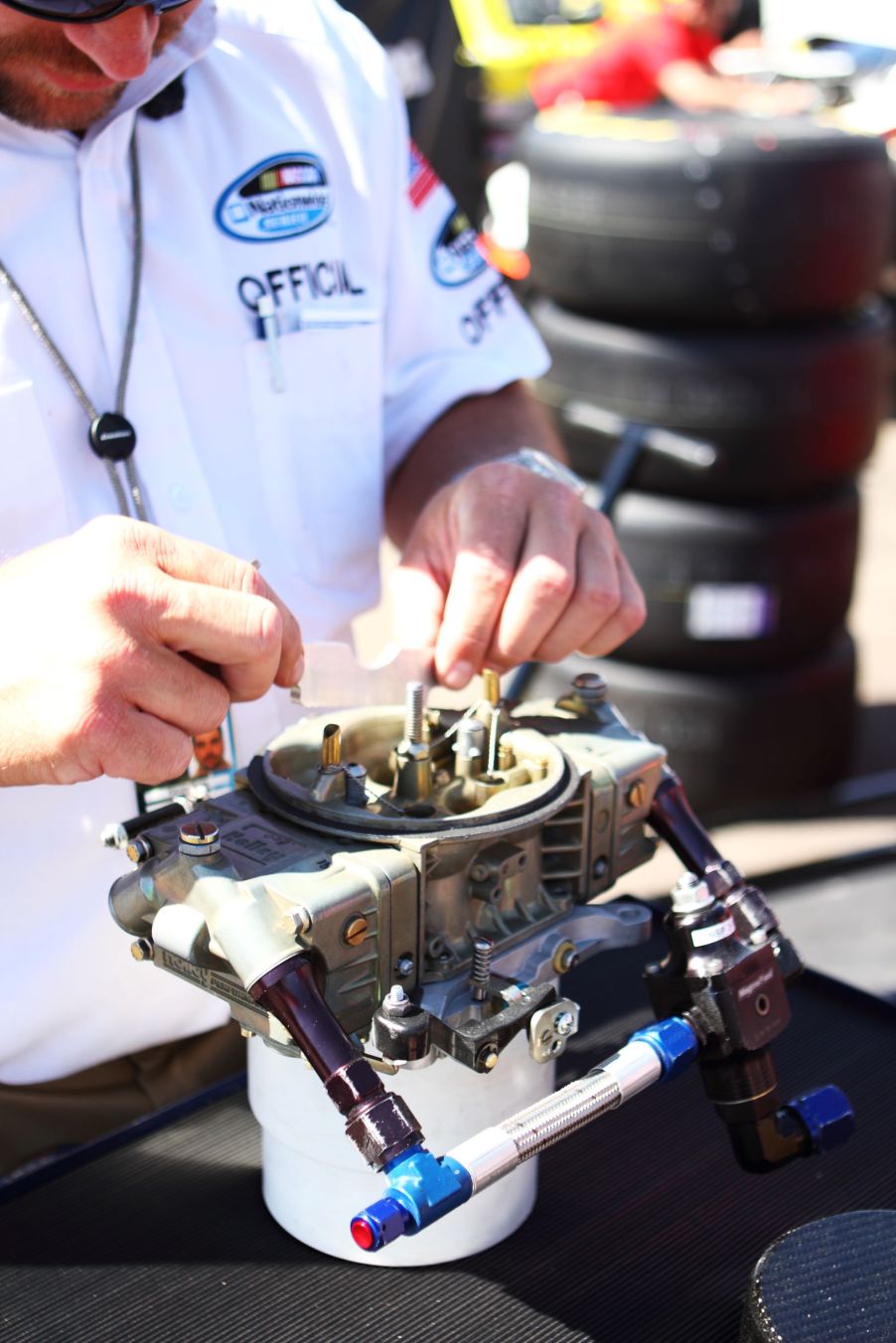
How Do You Adjust a Carburetor?
If you’ve been eyeing a classic car or motorcycle, know that their maintenance schedules are typically shorter than their modern counterparts. Oil changes are more frequent, for example. Plus, even the best-kept vintage vehicles are, well, vintage—and time decays all eventually. And one of the biggest changes is learning to live with and adjust a carburetor. But what does that entail?
Why do you need to adjust a carburetor?
Today, every new car and truck has a fuel-injected engine. And apart from some dirt bikes, a few dual sports, and Janus’s models, motorcycles have largely followed suit. Part of that has to do with fuel-injected engines’ greater efficiency and lower emissions, Autoblog and RevZilla report. But it also relates to why we have to adjust carburetors in the first place.
Broadly-speaking, carburetors and fuel injectors have similar jobs: delivering metered amounts of fuel to the combustion chamber. Electronic fuel injection systems accomplish this with inter-connected sensors and pumps.

Carburetors, on the other hand, take advantage of the venturi effect, whereby air passing into a narrowing orifice speeds up and drops in pressure. This draws fuel from a small connected tank (the ‘float bowl’) into a jet and atomizes it, The Drive explains. And, once the throttle valve opens, the air-fuel mixture passes into the combustion chamber, Hagerty explains. It’s a purely mechanical set-up, Motorcyclist reports.
That mechanical nature has its upsides. Carburetors are simpler to repair than EFI systems, and often cheaper, NAPA reports. However, they can’t react to changes in the environment, such as low temperatures or altitude-related pressure drop. Carbs only work within a certain range of conditions, Road & Track reports. When those conditions change, the engine doesn’t run as well—or at all. That’s why there’s a need to adjust a carburetor: it can’t do it on its own.
What do you need to adjust a carburetor?

Trying to adjust a carburetor doesn’t require specialized tools, Autoblog reports. For every-day conditions, all you really need are a few screwdrivers.
Whether you have a car or bike, your carburetor has a mixture screw, Motorcyclist reports. It’s located on the side of the carb and adjust either air- or fuel-flow, depending on its position. This adjusts the air-fuel mixture going into your engine. A richer mixture has a lower air: fuel ratio, while a leaner one has a higher one.
Turn on your engine, and let it get to operating temperature, which means using the choke—which enrichens the air-fuel mixture—until it does so, R&T explains. Once that happens, turn off the choke, and twist the mixture screw until the engine starts running lean, YourMechanic explains. You’ll notice a drop in RPM, and the engine may start to sputter.
Once that happens, re-adjust the screw until the engine smooths out again. If you have the service manual for your bike or car, it should have standard positions for the mixture screws. Make sure that the engine runs smoothly even at high RPMs.
But there’s another step in trying to adjust your carburetor. That’s making sure it idles smoothly using the idle screws. A smooth idle doesn’t just sound pleasant, but it’s also a sign of excellent performance, Motorcyclist explains. An engine with a lumpy idle won’t react properly to throttle inputs, or it might hang at higher RPMs for an extended period. And if you can’t get a smooth idle, you may need to change your carburetor’s pilot jets.
Should you switch your classic vehicle to fuel injection instead?
While these are the simplest ways to adjust a carburetor, there are other aspects to consider if you’re rebuilding or restoring one, Cycle World reports.
The float bowls need to have the correct fuel level to maintain the air: fuel ratio, Motorcyclist reports. There’s also the needle jet and main jet, which need to be swapped out depending on the temperature and altitude, Motorcyclist reports. Plus, if you fit an aftermarket exhaust, you’ll often need to re-jet your carburetor to compensate, Cycle World reports. A few carburetors even let you change the main venturi, R&T reports. And this is all for one carb; some vehicles have multiple.
Of course, it’s possible to find the standard positions, sizes, etc., for your carburetor in your car’s or bike’s service manual. However, some owners may be understandably overwhelmed at the thought of having to do all this just to adjust a carburetor. So, rather than going through that, they may try to fit their vehicle with an EFI system.
Swapping out a carburetor for an EFI system has gotten easier with aftermarket kits, The Drive reports. And not just for cars, but motorcycles, too, ItStillRuns reports. The kits aren’t cheap; it’s not unusual to spend $1000 or more on them. Plus, they require installing and tuning all of the relevant electronic components: the injectors, fuel pump, sensors, etc. But it does mean that your formerly-carbureted vehicle will likely be more efficient and easier to live with.
Choosing EFI over having to adjust a carburetor is largely a personal preference. For those often riding/driving through changing altitudes and temperatures, it might be worth it. But many carbs are no more difficult to work on than “model kits,” Hagerty reports. It’s a more involved process, but not necessarily a more difficult one.
Follow more updates from MotorBiscuit on our Facebook page.


